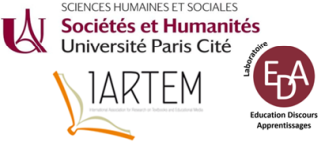OPPORTUNITY TO LEARN MATHEMATICS IN TEXTBOOKS: A SYSTEMATIC LITERATURE REVIEW
Tinevimbo Zhou
PhD Student, Science, mathematics and technology education, University of Pretoria, South Africa, teetine2002@gmail.com/u99308992@tuks.co.za
ABSTRACT
The opportunity to learn (OTL) mathematics constructs have been used to explore the relationship between classroom experiences and learners' achievement. In the textbook, authors analysed students' learning opportunities provided in tasks by analysing content coverage, cognitive levels, and content presentation and organisation features across various problems. Many researchers agree that the OTL presented to students in mathematics textbooks has a significant role in the student's learning outcomes and achievement. Textbooks play a decisive role in determining what and how OTL mathematics are presented to learners. However, scattered in the mathematics education research literature are various ways that are used to measure and present OTL mathematics in textbooks. The purpose of this systematic review is to contribute to this discussion by analysing the OTL in mathematics textbooks in international and national textbook content analysis studies. This paper reviewed 50 content analysis studies dealing with OTL in mathematics textbooks published between 2018 and 2022.
This review examines the content domains of OTL, how the studies measured OTL, whether sufficient OTL content was offered to students in the textbooks, and the relationship between the OTL in the textbooks and students' learning. The Preferred Reporting Items for Systematic Reviews and Meta-Analysis (PRISMA) 2020 framework guided the review process. The methods used to conduct this review were the ERIC database and the EBSCOhost Online Database, employing systematic search criteria including topic, year of publication, research base, reliability and validity, and research questions.
The findings show that the OTL content is measured by content coverage domain (number and arithmetic only (18%), algebra only (22%), geometry only (18%), statistics and probability only (6%), two and more content topics (30%), Euclidean geometry (2%) and their cognitive skills) and quality of instructional delivery (problem formats, representation features, contextual features, and response types). Furthermore, the findings indicate that OTL in mathematics textbooks has an effect on students' learning and achievement. These findings have implications for theory, practice, and research.
Keywords: Opportunity to learn, Mathematics, Textbooks, Textbook analysis
- Poster

 PDF version
PDF version

